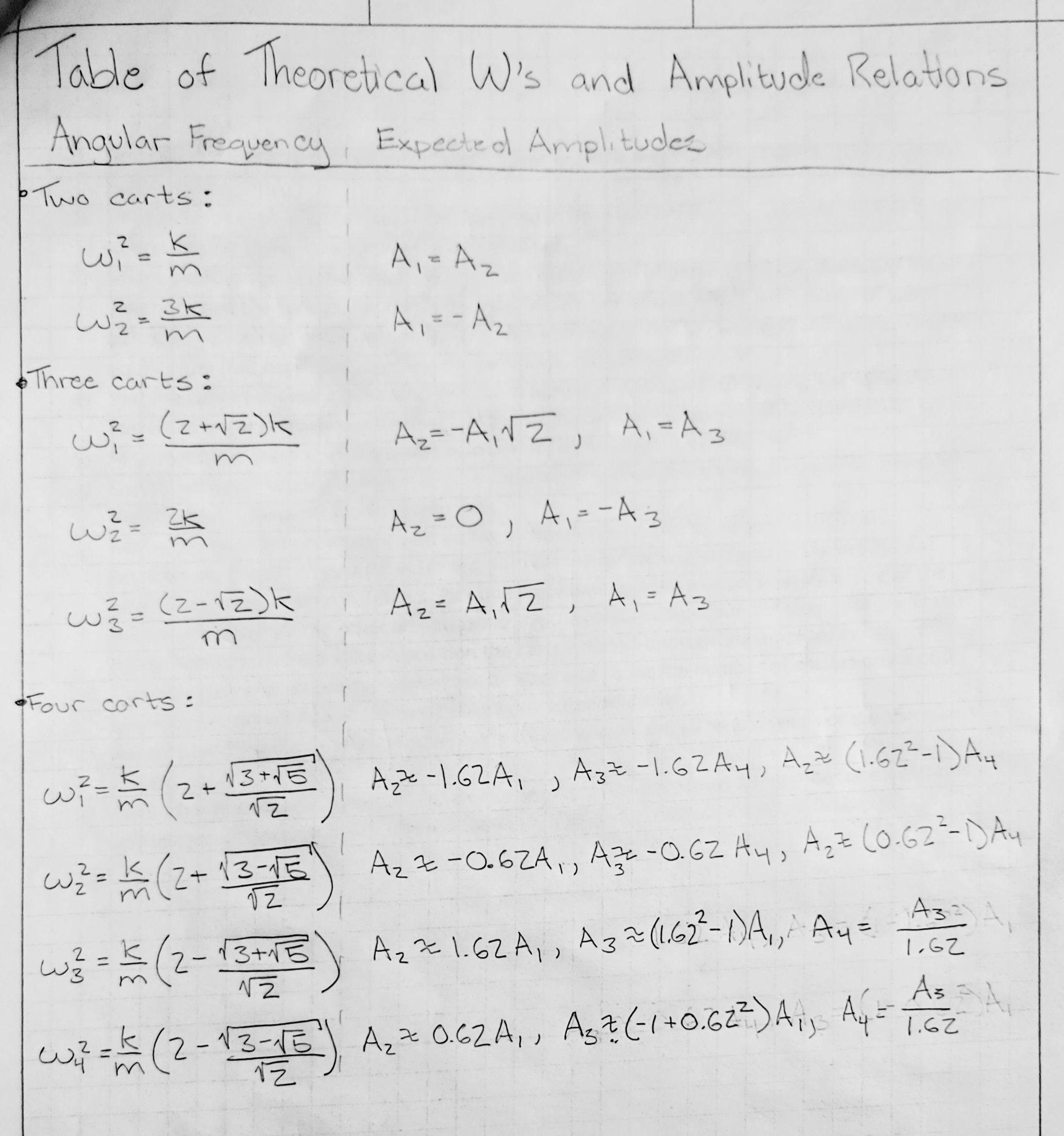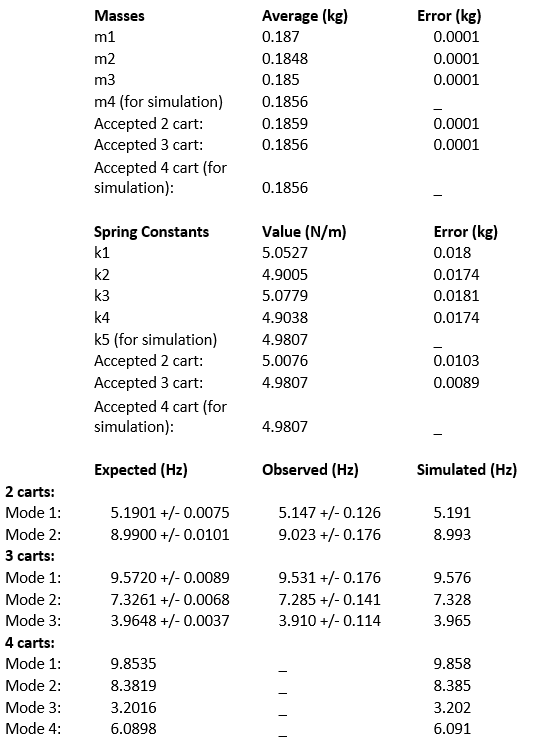Original Experiment
In the original experiment, the fundamental oscillating modes for the 2-cart and 3-cart were studied and the mathematical theory was verified experimentally with the Air Tracks. Fundamental modes provide a basis for all the possible oscillating modes that the system can exhibit.
Theoretical Angular Frequencies
In the table on the right, the theoretical angular frequencies and the required relative amplitudes of the carts is displayed for each of the fundamental oscillating modes. The frequencies for each mode are calculated using “k” (the average spring constant) and “m” (the average mass of the carts). Amplitudes (i.e., Initial Displacement in the simulator) are shown relative to each other. Their exact magnitude is a free choice however the listed relations must stay true.



